Across the world, sapphire has enjoyed a storied position as one of the most coveted gemstones for centuries. The ancient rulers of Greece and Rome adorned themselves in sapphire jewellery and, as the September birthstone, they have enjoyed ongoing popularity with modern consumers.
Many still associate sapphire with Kashmir – renowned for its vivid blue gems with silk – and Sri Lanka (Ceylon). The latter’s orangey-pink Padparadscha gems have long been admired by collectors. Madagascar has also become an important source of sapphire since deposits were first found there in the late 1990s.
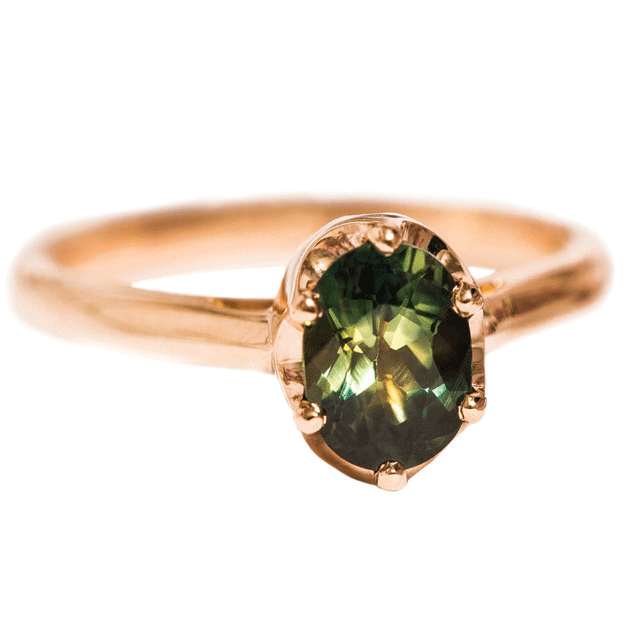 |
| Above: Victoria Buckley |
Yet one of the rising trends in the local market is for the gems in our own backyard: Australian sapphire. Sapphire has been mined here for more than a century and the country was the world’s leading producer by volume from 1965 to 1985.
Major deposits are concentrated around the east coast, particularly in northern NSW and Queensland where colours range from deep midnight blue to green, teal, parti- colour and yellow, with rare instances of purple, orange, peach and colour-change.
Before the year 2000, much of the Australian supply was sold to foreign buyers who then marketed it as being of Thai, Burmese and even Sri Lankan origin. Today, consumer awareness of the high-quality local material has grown exponentially.
“Sapphire has always been a popular gemstone within the jewellery industry due to its durability and interesting array of colours but, for the past year, we have certainly noticed an increase in requests for Australian sapphire,” Amelia Chafer, marketing manager Coolamon Sapphires, says.
Katherine Kovacs, director of K&K Export Import, agrees, saying, “There has been an increased demand over the last 12 months for bright, well-cut Australian sapphire in blue and teal – and we’re expecting further growth.”
The wide variety of colours, coupled with sustainable sourcing and competitive pricing, makes Australian sapphire a compelling category for jewellers – especially those looking to appeal to Millennial and Gen Z customers.
Benefits and challenges
As one of the most durable gemstones with a hardness of nine on Mohs’ scale, sapphires are ideal for everyday wear and can be set in any material, from platinum to 18-carat gold. As a result, they are a popular choice for engagement rings, often accented with white diamonds.
“We have seen a strong demand for Australian sapphires coming back into the market, mainly for engagement rings for our younger clientele under 35.
“They are a little more adventurous and want to include colour into their engagement rings,” says Simon West, of Simon West Jewellery in Melbourne, who sources sapphire from Gemfields in Queensland as well as Inverell and Reddestone Creek in NSW.
West’s customers have embraced unusual colours. “Blue sapphires are still going strong with 40 per cent of all sapphire sales, but that’s opposed to 10 years ago when 80 per cent of sapphire sales were blue,”West reveals.
The same trend has been evident at Coolamon, with Chafer telling Jeweller, “There is always a strong demand for a ‘good blue’, although there is no doubt that ‘teal’ has been the colour in fashion for some time, while parti-colour – yellow and blue in the same stone – is just as desirable for its uniqueness.”
Sydney jeweller Victoria Buckley has also noticed an increase in demand for sapphires for engagement and dress rings but notes there’s still a widespread misconception about the colours available.
“I have certainly noticed much more interest for Australian sapphires and I’m glad to see appreciation for our beautiful gems, even if it makes the prices for the top grades very different to when I started,” she says, adding, “Many people still think of sapphire as only blue and are quite surprised to discover the range of colours it can occur in.”
Chafer agrees: “The most common misconception about sapphire is that it is only blue but it actually exists in all colours of the rainbow. In our Central Queensland mines, the dominant colours are blue, blue/yellow parti-colour, all shades of yellow, and green. The pinks, oranges and purples are very rare but they bob up now and then.”
This offers both a challenge and an opportunity for jewellers. Overcoming preconceptions and educating consumers on the wide variety of local sapphires can be tricky. Yet they have a strong selling point, particularly for engagement shoppers: these versatile gems offer an affordable, natural and durable alternative to more expensive stones, like yellow or pink diamond, and can give the ring a similar look until the customer is ready to upgrade.
However, retail jewellers are quick to point out that their customers fall in love with sapphires on their own unique merits, not because they can pass for other gems.
“Australian parti-colour sapphires have always been something I’ve loved working with; they have such interesting and unique colours and effects,” Buckley says. West points to their “lustre and colour variation” as the main appeal.
The gems are a perfect fit for creative designs. Indeed, their vibrant hues mean these gems stand out at any size. “Using smaller stones gives the jeweller the choice of a vast colour range, greater ease of matching, and options for intricate designs using calibrated shapes,” Chafer says. “Smaller stones are ideal for cluster settings, shoulder stones, colour runs, encircling fine-solitaire settings and complete jewellery sets. The possibilities are limitless.”
One drawback of sapphire’s popularity for engagement rings is the limitations on the shapes available. “Cushion shapes are still popular and difficult-to-source shapes such as round and octagonal tend to get snapped up pretty fast,” Kovacs says. Meanwhile, Chafer reveals the trends for shapes change as often as for colour, noting hexagons and emerald cuts are currently popular.
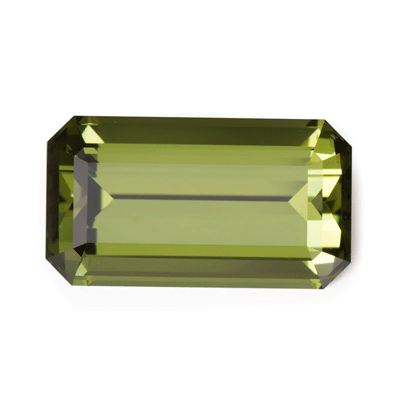 | 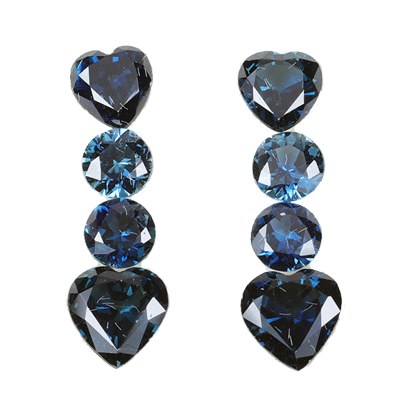 | 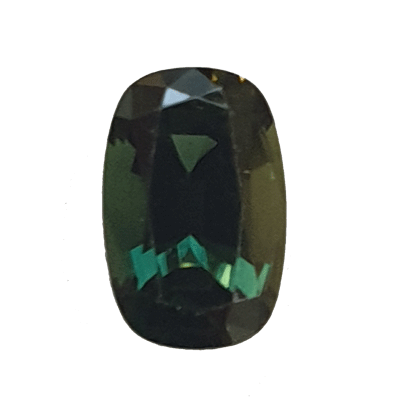 | 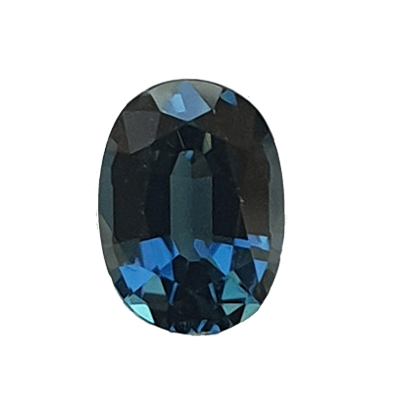 |
| Above: Coolamon Mining | Above: K & K Export Imports |
An ethical perspective
Three in four Millennial and Gen Z consumers are willing to pay more for a product that has been sustainably and ethically produced, according to research from Nielsen. When it comes to jewellery, the concerns of consumers tend to coalesce around country of origin and the environmental impacts of mining. On both counts, Australian sapphires have a marketable edge as the local industry is tightly regulated with strict environmental and labour controls.
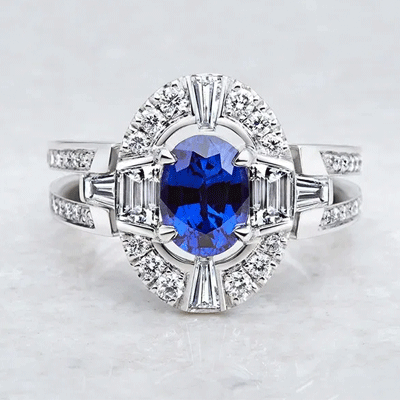 |
| Above: Simon West |
Jewellers that we have been working with have been doing a brilliant job at promoting Australian sapphire as an ethically sourced, ‘home-grown’ product,” Kovacs says. Chafer adds: “There’s an assurance our sapphires are ethically mined and are authentic natural gemstones.”
When it comes to treatments, disclosure is standard practice among Australian suppliers, while gems sourced overseas have fewer guarantees of accurate labelling.
At Coolamon Sapphires, the process of mining is also low impact. “The sapphires are recovered from the alluvial deposits by a washing process which uses no chemicals and produces no noxious products,” Chafer explains.
This operation is dependent on having sufficient water and has been heavily restricted in recent months due to the ongoing drought. Those looking to acquire existing stock not only support the local industry, but also businesses stricken by lack of rain.
Perhaps reflecting the rising demand for this responsibly-sourced gems, Canadian mining company Fura Gems recently entered an options agreement with Richland Resources for its Queensland sapphire mining permits and licenses.
Fura, which bills itself as “a progressive and imaginative company” aiming to set “a new precedent for best practices in the gemstone industry”, already mines ruby in Mozambique and emerald in Colombia and the Australian acquisition rounds out the group’s ‘big three’.
Sapphire is an enduring favourite of the jewellery industry and Australian sapphires in particular are winning over jewellers and consumers with not only their beauty, but also their ethical and sustainable credentials.